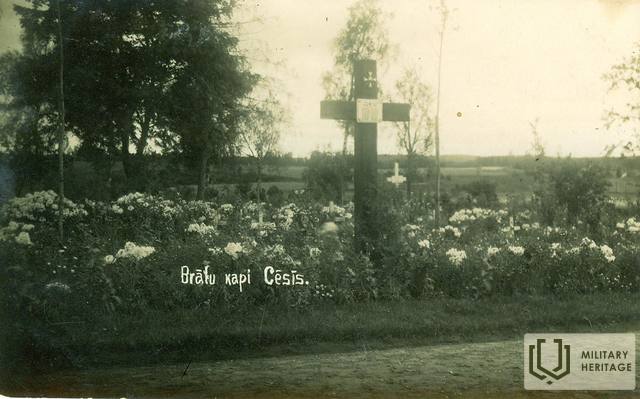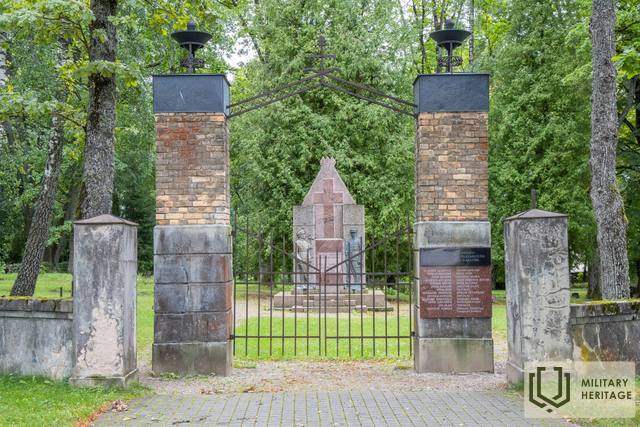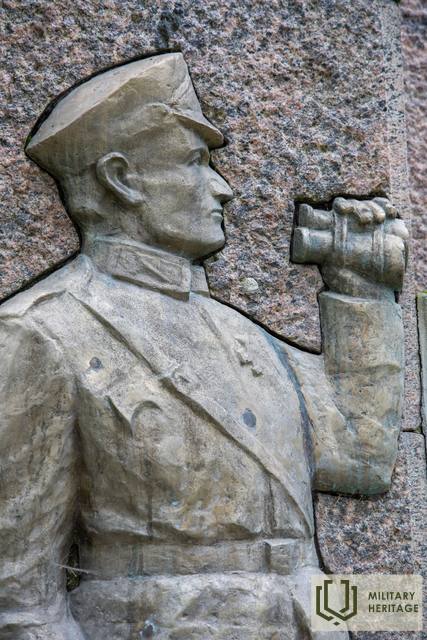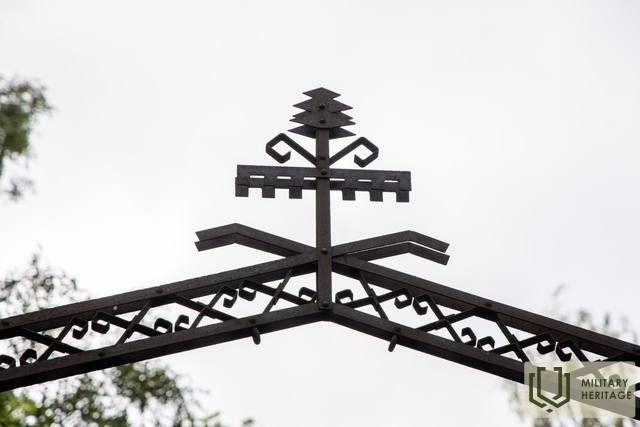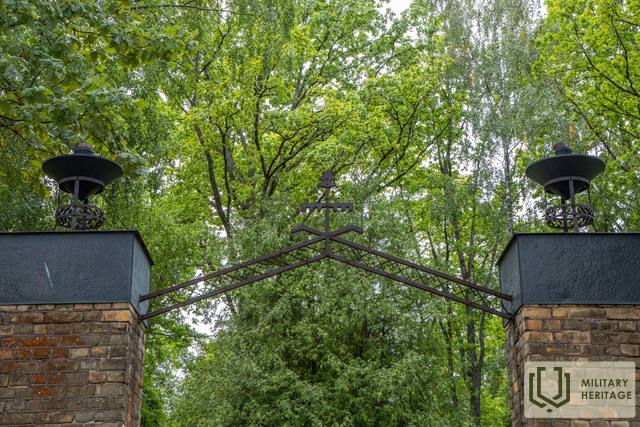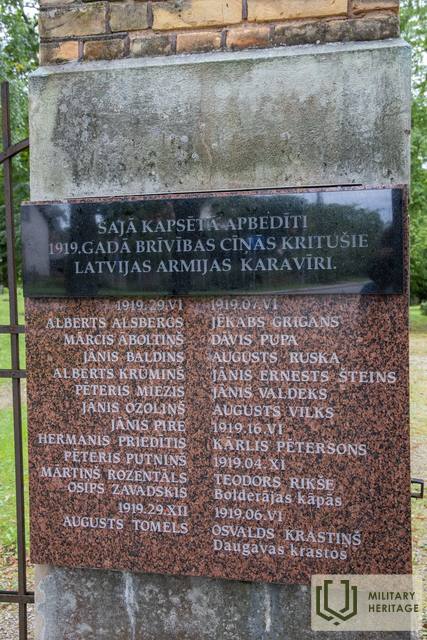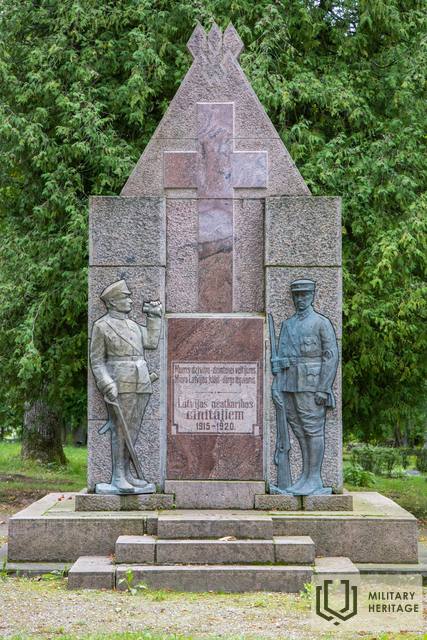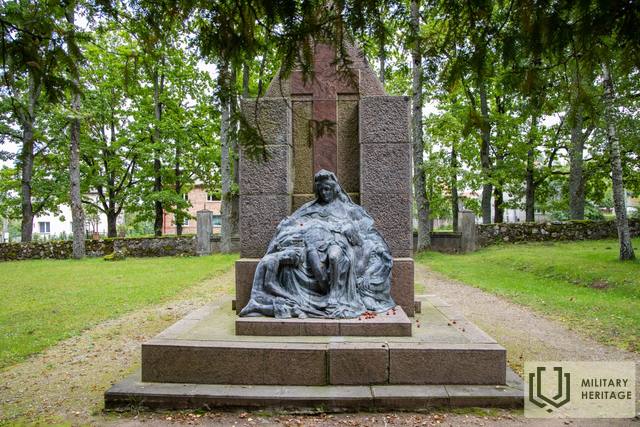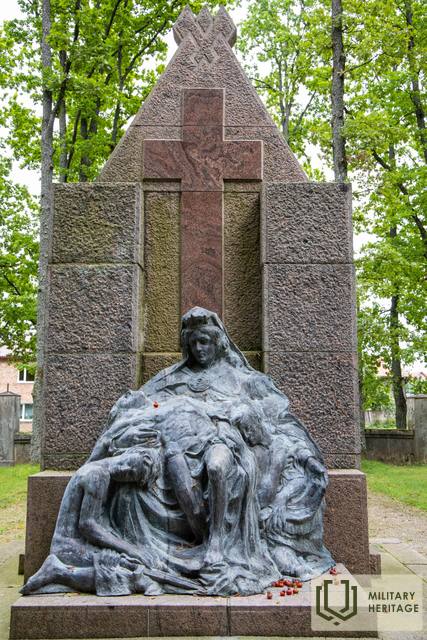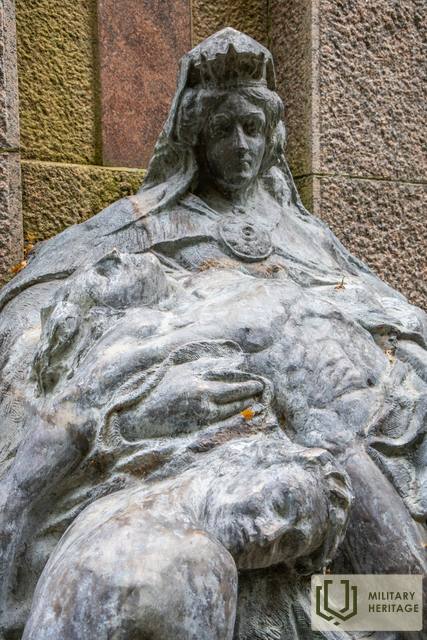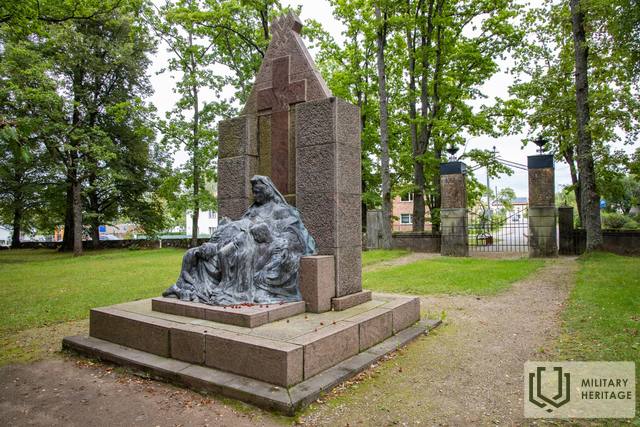Cēsis Brothers' Cemetery Memorial site
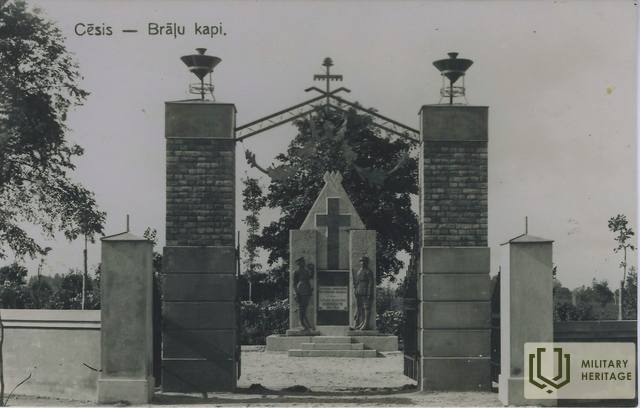

 89
89



Located in the Cēsis Lower Cemetery, Lenču Street 15, Cēsis.
One of the most significant memorial sites of the First World War and the War of Independence in Cēsis is the Brothers' Cemetery in Lejas Kapis.
The cemetery houses the Brothers' Cemetery Monument, designed by Cēsis artist and councilor Augusts Julla (1872-1958), unveiled in 1927, and dedicated to the soldiers buried in the Brothers' Cemetery from 1915 to 1920.
About 200 soldiers are buried in the Brothers' Graves of the Cēsis Leja Cemetery. Among them are an unknown number of Latvian riflemen and Russian soldiers who fell in World War I, as well as soldiers of German (10), Polish and other nationalities. During the Latvian Liberation Struggles, 22 soldiers of the 5th (2nd) Cēsis Infantry Regiment were buried in this cemetery, as well as 11 freedom fighters who fell in other Latvian army units. 2 Estonians, 15 victims of the Bolsheviks, and Latvian Red Riflemen also rest in the Brothers' Graves.
Used sources and references:
Tālis Pumpuriņš, historian
karavirukapi.blogspot.com
Related timeline
Related topics
Related stories
The beginning, course and conclusion of the Battle of Cēsis
The victory in the Battle of Cēsis was destined to become a turning point in the Latvian and Estonian struggle for the independence of their country. This victory put an end to the plans of the Andrievs Niedra government and the German general Rüdiger von der Goltz to conquer the Baltics. Instead, the Latvian Provisional Government of Kārlis Ulmanis resumed its activities in Liepāja.
The monument dedicated to the Cēsis Regiment student detachment near the former Livu Parish Hall
The Cēsis Regiment volunteer schoolboy company participated in the 1919 Cēsis battles, which formed as a combat unit from 108 young people from Valmiera and Cēsis schools on June 5 in the premises of the Cēsis Progymnasium. Already on the night of June 5 to 6, about an hour after midnight, there was an alarm and the company was ordered to move to positions. The company moved to the Mācītājmuiža - Meijermuiža line, which was considered the most important battle area.
In the first battle, several schoolchildren were wounded, but Edgars Krieviņš, a Valmiera native, died on the same day from a very serious wound to the stomach. He was buried with military honors at the Valmiera City Cemetery on June 13. Edgars Krieviņš was posthumously awarded the Lāčplēsis War Order.
The unusual story of the monument to the Cēsis Regiment's School Company
The Cēsis Regiment volunteer schoolboy company participated in the 1919 Cēsis battles, which formed as a combat unit from 108 young people from Valmiera and Cēsis schools on June 5 in the former Cēsis German Progymnasium premises on Dārza Street (now Bērzaines Street 4). Already on the night of June 5 to 6, about an hour after midnight, there was an alarm and the company was ordered to go to positions. The company went out to the Mācītājmuiža – Meijermuiža line, which was considered the most important battle area.
Cēsis New Castle – walls that created the security of the Latvian state and still protect identity documents
The Cēsis New Castle was built on the ruins of a military fortification – a medieval castle. However, this is not the only military significance of the building.




